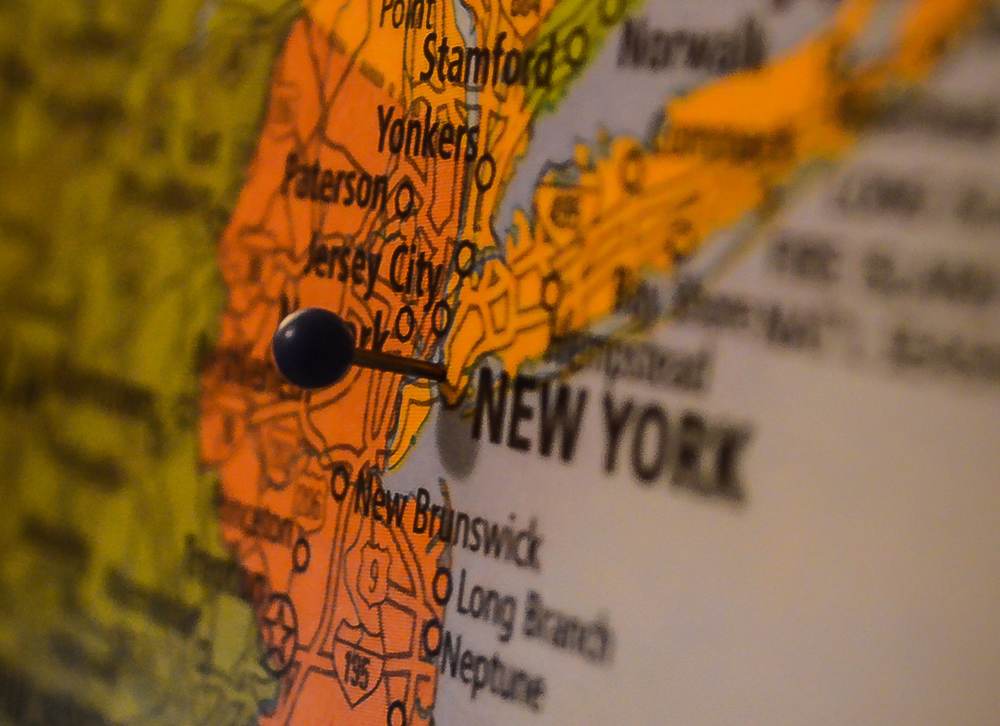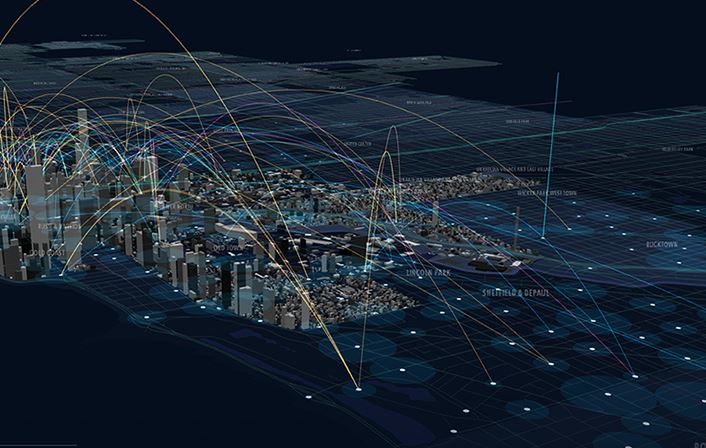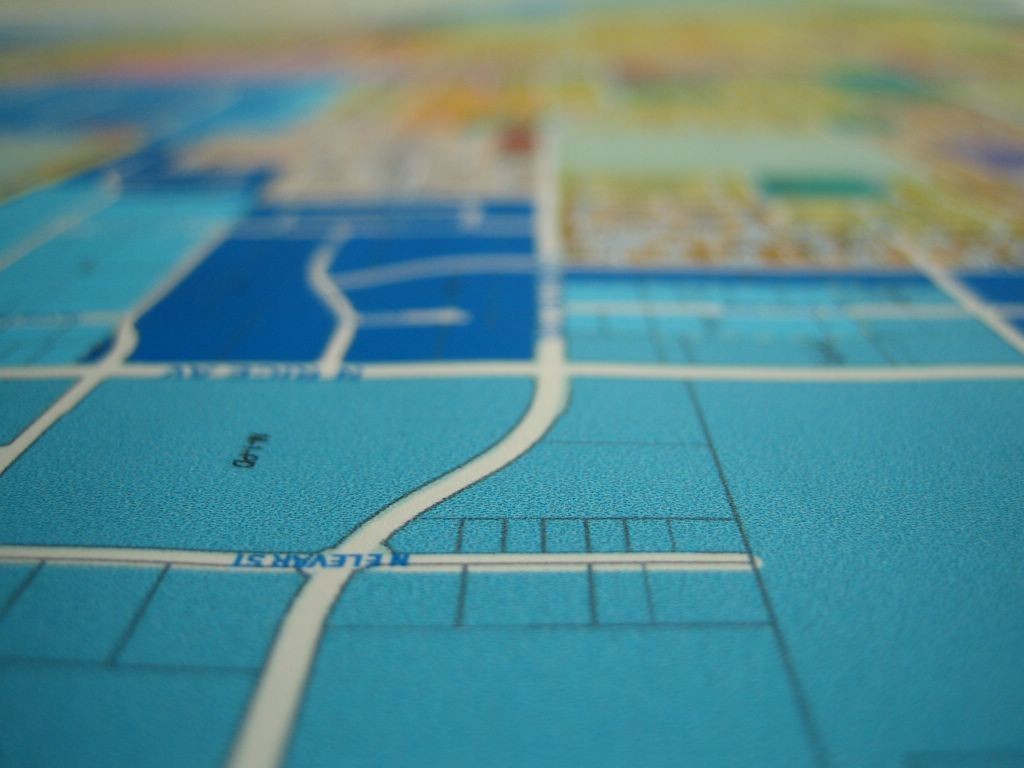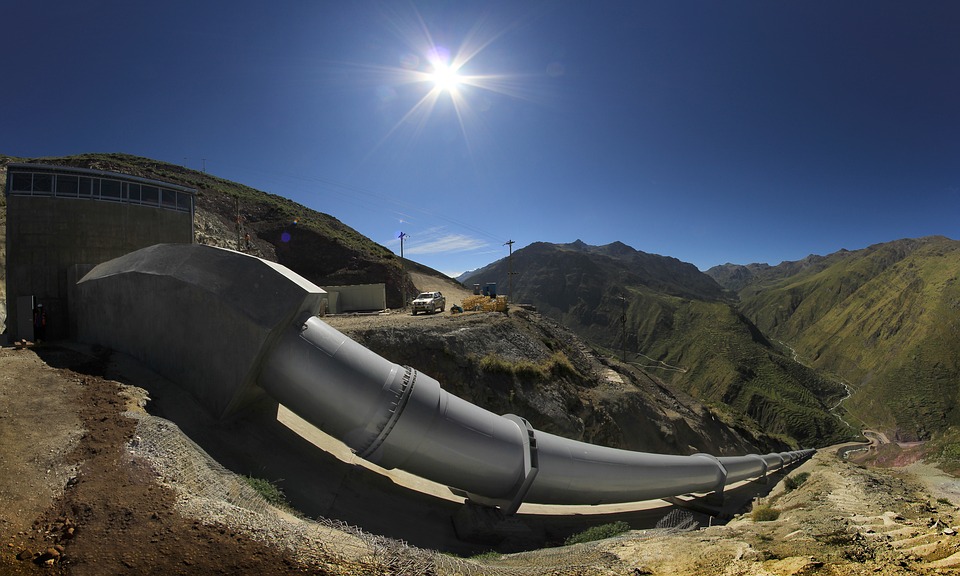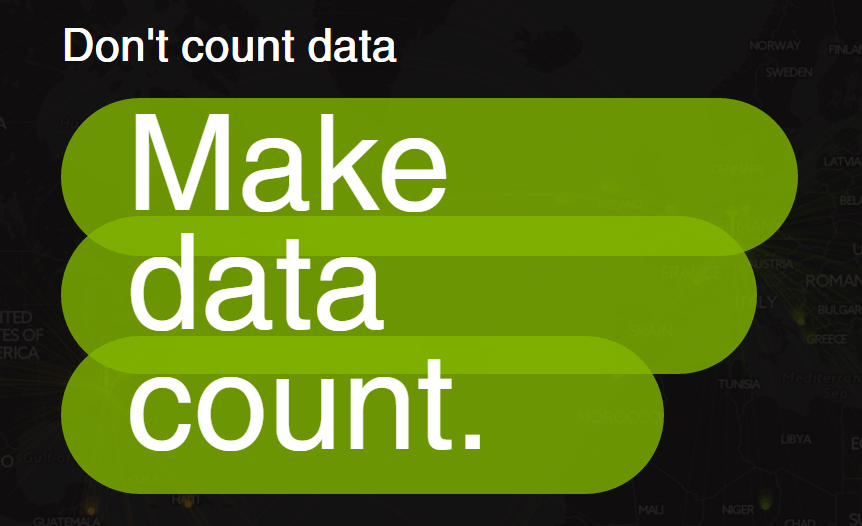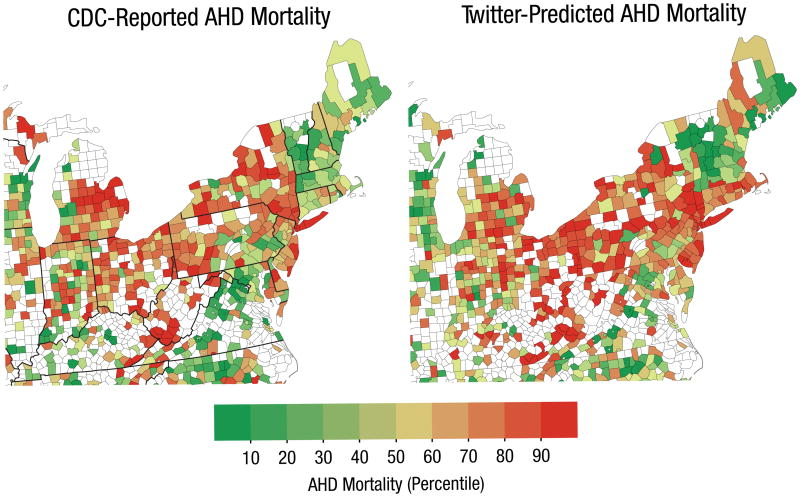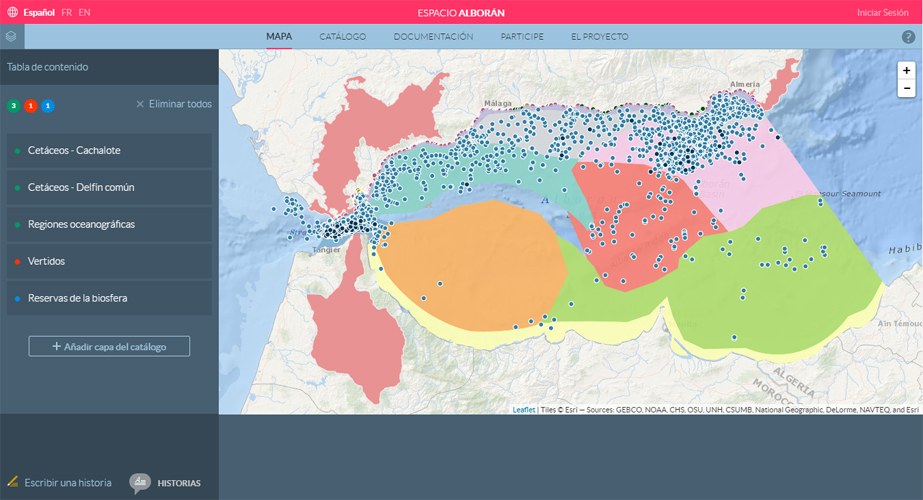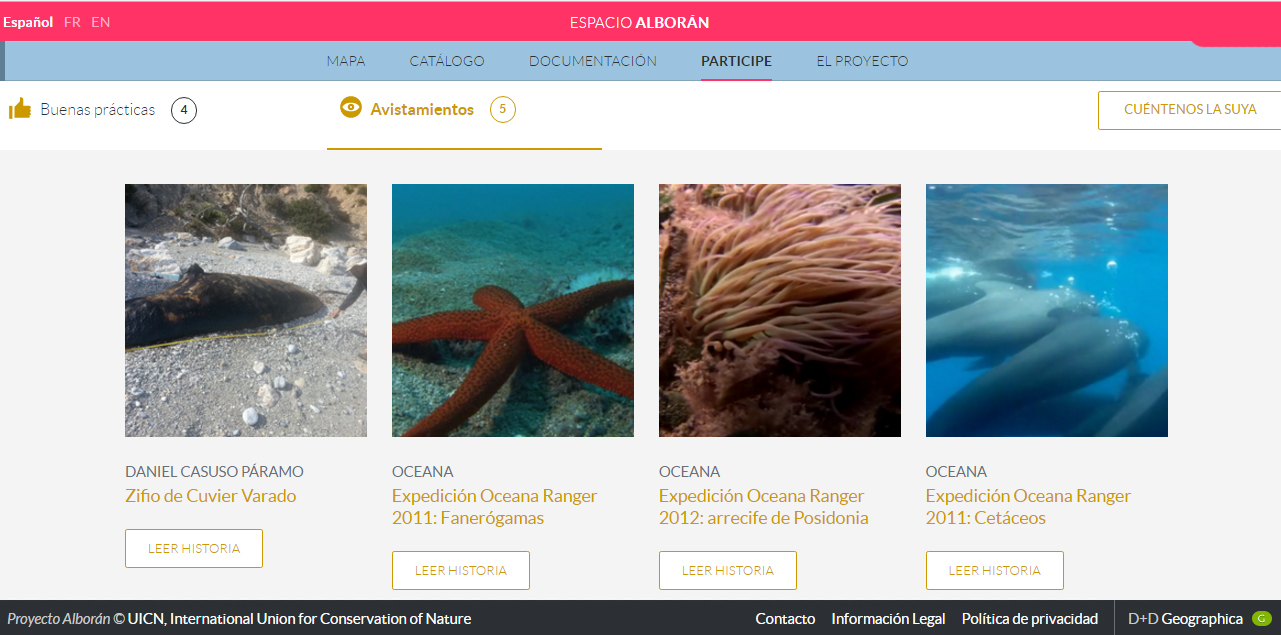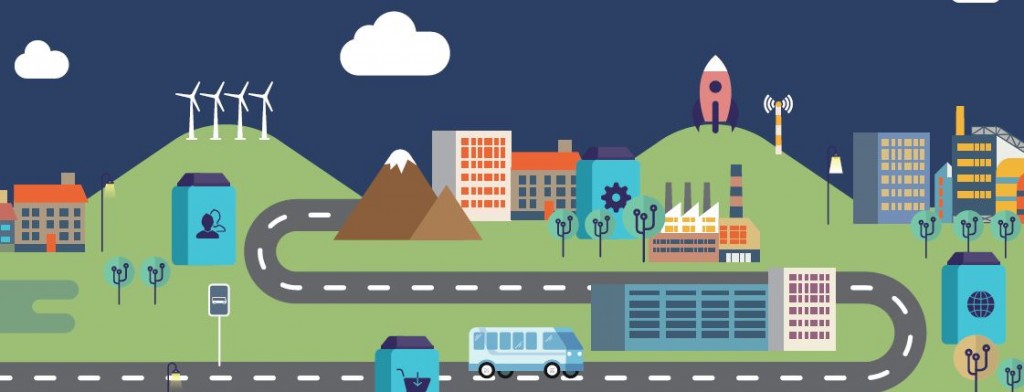The concept of smart cities refers to a city model where resources are optimized, improving the citizens life´s quality through technological innovation. In this area, geolocation technologies play an essential role. Is this article we tour the concept of smart city, we explain why the geolocation is so important and applicable technologies and some success stories. Let’s start.
azahara
Huge Data Collections to improve the decision making process
Data Science vs Big Data, What are the differences?
The terms Big Data and Data Science are associated with large volumes of data characterizing the new technological era. In particular, with the collection, analysis and, as an ultimate objective, extraction value of such data to aid in decision making.
Smart Cities Projects
Mains obstacles on developing Smart City projects
When developing a project of smart city, it is imperative to find technological solutions that promote rationalization and administrative improvements in diverse areas such as the environment, transportation, paperwork, health or, for example, security in the urban environment.
GIS technology for utility companies
GIS technology, serving utility companies
GIS technology has revolutionized the world of information management and has become the perfect ally of utility companies. Efficiency, speed, cost reduction, among others are the main benefits of using it, hence the GIS is a technology with a great future ahead.
Today, we face an exponential growth of information generated daily; hence the Geographic Information Systems (GIS) play a fundamental role in providing the necessary infrastructure for institutions and enterprises to improve management and strategic knowledge of its surroundings from such information.
Thus, this allows having location information, status, trend, routes, guidelines and/or models. Therefore, GIS technology has become a perfect ally of utility companies. And, in the field of utilities providers, such as gas, electricity or water, it is vital that there is an optimum use of its resources.
All of this, with the main aim to achieve maximum efficiency in its operation and to improve management processes and decision-making, mitigating costs and therefore resources for these companies. We tell you how.
GIS technology benefits for utility companies
GIS technology can be used in different application areas. In other words, they can be adapted to utility companies to achieve different objectives.
Some examples are a better planning in land use; the use of natural resources, optimization in environmental analysis or better urban planning, transportation or logistics.
GIS technology is therefore, an established tool in the sector of large utility companies, because it allows them to manage network infrastructure assets (for example, wind farms, piped water distribution or fibre optics), through of a data model connected to the entire corporate structure.
Thus, it is possible to make operational and business decisions relying on a single source of real information and constantly updated, thanks to the GIS technology.
It is also possible to use this GIS technology with other business management programs to improve the effectiveness and operational efficiency and increase flexibility to face business changes. In short, as we said above, it is important because its main objective is to take the best business decision.
In this sense, it is concluded that the technology improves efficiency utilities project, since production processes are simplified: resources are optimized; increasing thus, productivity; process costs are reduced and ultimately, competitiveness is promoted.
Moreover, thanks to the GIS technology, we have clear and relevant information, and that is why operational efficiency is improved due to reduced operating costs and an effectively answer to the requirements of users or customers.
On the other hand, not only traditional GIS technology is used in recent years, but we have been moving towards mobile GIS applications, which can operate connected or eventually disconnected.
The main purpose of this mobile GIS technology is to allow updating field data on many occasions, in real time, expediting the process flows.
Showcase of GIS Technologies for Utilities: Akvo
GIS technology is so important in the utilities, therefore companies have begun to emerge, making a faster development this field. In fact, they are making a “revolution” in the world of mapping, through the data and information are continuously generated, it is the main objective of the Spanish startup CARTO.
In short, what the company intends is to offer, by the GIS, a simple way to extract geo-data (for example, from sensors or other equipment provided by the users themselves) and represent them on a map.
It is a tool in the cloud to make maps, which allows visualizing, analyzing and storing geospatial data more easily and effectively.
Geographica develops powerful tools to organize, understand and explain the information generated, fully adapted to each person, event or company. One of the success stories is Akvo: a platform that combines and analyzed geographic information by business information, for a better and effective management of water utilities.
Among its main features include versatile data exchange, combining GIS information with commercial and Big Data or continued use of analysis tools, providing an appropriate analysis of the state of infrastructures and forecast future investments.
It should be noted that this analysis is done in real time, which would lead, for example, learning first-hand and in real-time a possible case of breakdown, leakage of water discharges…
To represent all this information, Akvo uses extensive graphics and displaying graphically data and business indicators. All this is done by multiple platforms, integrating desktop, web and mobile.
Using Akvo, calculations analysis and management are faster, because proprietary algorithms are used; consequently, increasing productivity. Another benefit of this platform is that the high costs of GIS solutions are considerably reduced, thereby, reducing the process costs.
And as we discussed above, Akvo uses the latest technology in visualization and information management, as well as using CARTO, QGIS or D3JS. In short, this tool is directed to architectural firms, universities, environmental companies, Administration, scientists … in order to integrate the data of various kinds (economic, geopolitical, demographic, urban …) provided by GIS technology.
The future of GIS technology
In short, we are in the Age of Big Data. We are surrounded by information, data and connected devices, which in some circumstances may be sensors. Urban environments are full of sensors that can give us information, and so, we have to give them sense. The ability to use GIS technology is completely changing information management.
GIS technology is continually progressing. In fact, we can conclude that it has become the geographical infrastructure of “everything”. Ask capabilities and display geographic data are easier to find every day; and as time passes, this technology is cheaper and accessible to anyone in the world, hence its current importance.
Many disciplines have benefited (and are benefiting) from the GIS technology, including supply utility companies, being, in this case, one of the sectors where could have multiple options of performance in the future.
And is that as we have seen, the benefits that GIS provides to utility companies are innumerable: cost reduction; increased productivity; calculations and information management more quickly and efficiently; promoting competitiveness… all with the firm intention to take the right operational and business decision.
Predict the future with Data
Make data count; predict the future with machine learning
New times are marked by the sign of the digital age, globalization and the huge amount of mass data generated daily. Big Data is rigged to great challenges and better opportunities.
Beyond the famous 5 Vs that characterize it (volume, velocity, variety, veracity and value), Big Data have great possibilities in the most unimaginable fields. And it does, especially, because new technologies have emerged to respond, with unprecedented efficiency, to the needs of storage and analysis of big data.
There are many technologies and concepts that are part of this universe of big data, whose growth is unstoppable, as the Internet of Things (IoT), data exchange machine to machine (M2M), the increasingly complex environment of IT or predictive machine learning.
The importance of process data
The Big Data challenges, in effect, require capable approaches and systems to collect, store, make efficient searches and, finally, carry out analysis, whose results could be conveniently displayed.
But these challenges are accompanied by a whole world of opportunities for many different actors, in a scientific or enterprise level, or with regard to public organizations.
The knowledge revolution has arrived and the goal is clear: valuing data to exploit them, a key point in which, in addition to innovative technologies, come into play data science and data scientist´s figure.
It is, in short, the way to apply technologies, creating ad hoc strategies and methodologies to implement complex algorithms that provide us an insider view to better decision-making.
Not surprisingly, the data serve less if we do not implement custom solutions. Without a purpose and a technology capable to manage it, the data value will be zero. In contrast, processing that information in the desired direction provides a good data management to obtain comparative advantages.
The same finding of the information sought is, in itself, a great success, the key that will allow us to advance in our goal. Therefore, the data is not an end in them, but it is the best way to reach this really valuable information, that will make the difference.
The goals could be very different types, from monetizing the information to make it an effective tool to improve governance, as occurs in smart cities projects.
Machine learning, predictive artificial intelligence
Within this complex but exciting context, the fashionable part of artificial intelligence dedicated to learning by machines, machine learning is based on systems that automatically learn.
We understand that action learning as identifying complex patterns in millions of data. Basically, the machine is able to predict behaviour “learning” an algorithm that checks the data.
The peculiarity of these methods of prediction, based on algorithmic methods where the certainty of the theoretical model makes way for approximate models based on Probability and Statistics. This way of modelling reality, based on probabilities, is that our brain follows, supported by its large capacity computing. The absolute certainty does not exist for our brain; each of us interprets reality and adjusted it according to a certain probability, required at the time.
Free absolute certainty model, as previously described, its confidence level will move within a given fork, considered a significant level of efficiency. To this end, it will be decisive the practical utility that could provide a certain percentage of correct answers.
And the results could be spectacular, as demonstrated by two of his greatest achievements: the Google voice recognition or facial Facebook. In both cases, without reaching the actual model, which underlies each one, applying machine learning algorithms and obtaining approximate models with an acceptable margin of error and with a huge computing speed. It is this computation speed what we pursue in most cases, looking for a very small error in prediction in a time acceptable to the application.
Machine learning applications
Fields of application of machine learning are endless. Sectors such as e-commerce and marketing, in general, are just a tiny sample of how much a project of machine learning can offer.
When planning any initiative, imagination can play a big role, no restrictions other than the legality and ethics. The scope, in short, depends on the margin, budget and data are available.
Data science teams have in machine learning a great ally. While there are hybrid approaches, they are self learning systems within an ocean of data, without further programming.
Machine learning, for example, is the heart of the recommendations systems of giants network, like eBay, Amazon, Twitter, Facebook or LinkedIn, as well as a host of projects fraud detection networks, data communications, recognition voice, breakdowns in machinery, technological equipment failures, algorithms for predicting disease, leads, crimes or consumer trends.
Machine learning applications in Smart City
At the level of the smart city, any progress in this area could have very interesting applications. From the facial or voice recognition to carry out programs of social inclusion of disabled people to, say, flexible behaviour of a mobile application to suit the preferences and needs of each user.
Predicting the urban traffic or make medical pre-diagnosis based on the patient’s symptoms are other examples of projects under the environment of the smart city that could arise, exploiting the great potential of anonymous data.
Far from being useless, they can actually contribute much value, as demonstrated in the following three next examples, focused on improving public health, sustainable mobility and safety in cities.
First, American psychologists found useful information to improve preventive health policies. This time, they succeeded analyzing the optimistic or pessimistic tone of the tweets in different geographical areas and establishing a correlation with death rates for heart problems.
By overlaying a map generated by the tweets on the map pointing mortality data for coronary pathologies, they found striking similarities. By analyzing 148 million tweets from 1347 US counties, predicting rates of heart disease more effectively than traditional risk factors, including obesity, diabetes or smoking.
The conclusion of the study, conducted by scientists at the University of Pennsylvania, offers no doubt: the social and spatial environment has a decisive influence on coronary problems. Ultimately, an effective social level analysis can not apply to private individuals, but it is of great importance to implement ad hoc policies. And even to track the results, once implemented campaigns.
In the design of smart cities, on the other hand, sustainable mobility is one of the major objectives. In this regard, the IEEE International Workshop on Urban Mobility and Intelligent Transportation Systems UMITS 2016 was a landmark event in which leading initiatives for urban mobility and intelligent transportation systems were presented.
In the event, the work named “Understanding Daily Mobility Patterns in Urban Road Traffic Flow Networks using Analytics” was presented, developed by Tecnalia, within the project a cloud platform services and tools with intelligent mobility in the context of smart cities.
One of the strengths of the project, precisely, lies in the development of different traffic variables prediction algorithms (intensity of vehicles on a road or occupancy), fed by data in real time from the city of Madrid.
According to its creators, it was by applying machine learning techniques, with the objective to study different issues, affecting the traffic, as it was possible to improve the effectiveness of predictions.
Finally, a joint effort of Fondazione Bruno Kessler (FBK), MIT and Telefónica R&D is one of the main achievements of machine learning to anticipate social risks from the analysis of human behaviour.
In this case, related to crime. Its project, “Crime Hot Spots” is a minefield of data generated by smartphones, which could detect future crime scenes. Specifically, it could predict in which district is more likely that a crime occurs in the city of London, with an accuracy of about 70 percent.
Compared to conventional systems, it represents a huge step forward. Instead of relying on costly and time consuming data collection of crime statistics and local demographics, it uses a log made from criminals and demographic statistics City sources, along with data emitted by mobile phones to collect key information about its owners, as its geolocation in real time, as well as sex and age.
After a phase of refining the system to ensure the anonymity of the data and after adapting to other cultural environments, it is important to provide information for public use. Its creators are not doing anything wrong when they claim that their results could be of great interest to governments and security forces.
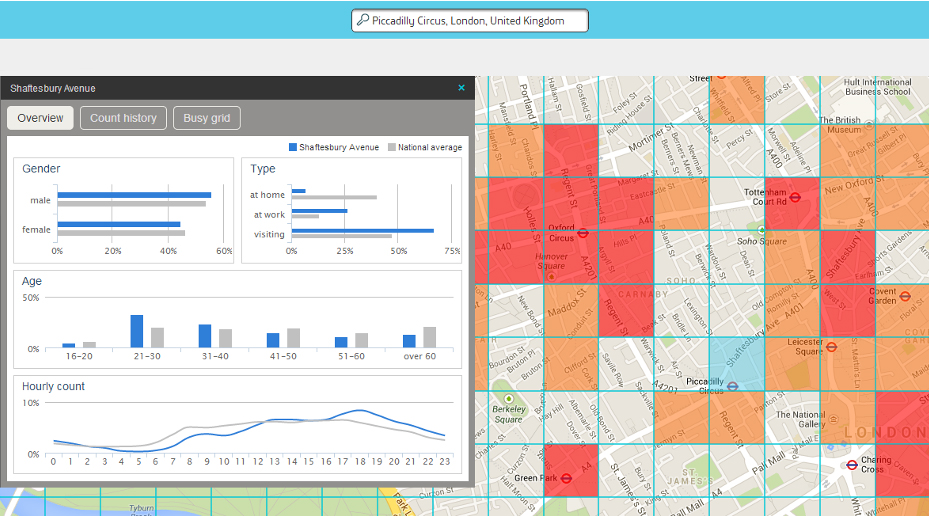
Knowledge revolution, interactive approach and participation
Geoportal: beyond the map
In the context of the current technological revolution, the definition of “geoportal” goes beyond purely mapping. Thus, at the time of defining the term in question is key to transcend mere ideology, not forgetting contextualize it in this digital era, marked by the knowledge revolution, interactive approach and citizen participation.
In this article we will give a brief review of the defining characteristics of the geoportals, after focusing on the illustrative example of the Alboran Sea geoportal, developed by Geographica.
This is a success story, prepared for the UICN (International Union for Conservation of Nature), which has emerged as a participatory platform with information on natural resources as valuable enclave, which has a rich biodiversity.
But before, we get back to the concept of geoportal: While we understand as a portal that provides access to maps, the concept is actually much broader.
Along with the cartographical, we find other complementary elements that enrich the information and allow, in many cases, the improved decision making by their managers and the quality of information to citizens and the scientific community, where appropriate.
Some of the elements that may be included are: infographics, statistics, based on previous behaviour of some variables, aerial photographs and databases with geographic information related to it for enrichment trends.
A first approach
Indeed, in addition to information on the geographical, the geoportals facilitate other information that, while linked with that directly or indirectly complement it in the desired direction.
Geoportals should enable the integration of diverse information and display it in an orderly fashion, always depending on the approach and specific needs. Not surprisingly, its themes and approaches can be very diverse, so casuistry not advice to incur excessive generalizations.
Unafraid to generalize, it can be argued that the conception of a geoportal as a mirror and melting pot of information from different sources is a necessity in most projects, and the goal is not only to gather that information, no more.
In contrast, the ultimate goal is to obtain that original and varied information to provide orderly, timely and intelligent data. Only through integration, analysis and visualization it is possible to generate simple constructive knowledge without sacrificing usability, communicating it clearly and intuitively.
At the time, that amount of information fosters positive synergies that are necessary to achieve the objective or objectives. Although as a common denominator they are practical and have a spatial perspective geoportal vary depending on the subject and approach, among many other factors.
With regard to its objectives, they can provide useful information to the public, the scientific community, public administrators or, for example, also come to collation think tanks.
Above all, engulfing in a democratic culture based on the principles of participation, transparency and information to support technical decisions and policies under criteria of efficiency and sustainability.
Alboran Sea Geoportal
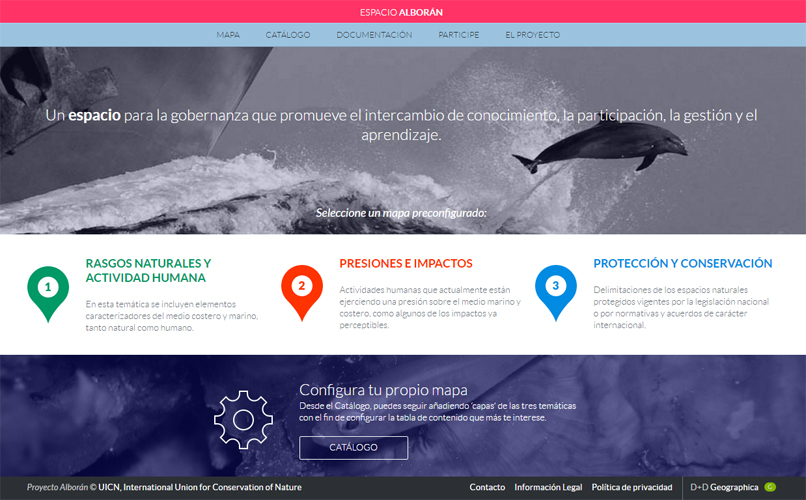
The characteristics noted on geoportals are clearly observed in the geoportal for Governance in the Alboran Sea, a project created to promote the participation of key players involved in maintaining the environment in good condition.
As often happens in these cases, there were many organizations and institutions that produce important information, so that one of the key problems to overcome was the dispersion and the large amount of data.
Beyond offering cartographic resources, information materials and, in short, being a digital resource centre on the issue, it seeks to develop tools for environmental monitoring in collaboration with scientists.
In this sense, it is intended to report on the state of the environment, respond to many questions about the growing impact of human activities on the environment and take advantage of citizens’ contributions to increase knowledge of the medium.
Referring to the think tank, this geoportal can assimilate these think tanks as long as help to improve knowledge and better understand the reality. In this case, it also reveals useful to sensitize the public, as well as providing a good analysis when designing public policies.
Citizen cooperation, as mentioned, is another generic characteristic of geoportals and this is no exception. On the contrary, the orientation itself is one of the main objectives of this participatory platform.
Thanks to her, advantages, often easily interrelated very different fields are obtained. From an input data for scientific interest to community, building on the progress of it, being a tool of enrichment think tank role.
Since encourage interaction not only requires gathering relevant information on natural resources and biodiversity of this ecosystem, but also offers it to the players according to their demands, the platform has to be versatile.
Finally, the momentum created sum up positive synergies that help advance in different fields as well as awareness more effectively, which simultaneously an instrument of awareness and environmental education.
In short, the initiative has launched a procedure common environmental management around the Alboran Sea, facilitating the exchange of experiences among all stakeholders and interest groups linked to this natural enclave of great importance to ecological, geopolitical level scientific.
Thus, it seeks to identify, unify and relevance to the priorities that will improve the management of this privileged environment. Not surprisingly, the development of this geoportal is part of POCTEFEX-Alboran Project, “Transboundary Space of Natural Shared Management”, participating both in the same philosophy.
Just as it arises in the context of the new framework provided by the neighbourhood policy towards the Mediterranean basin promoted by the European Union, the objective of the Geoportal is to encourage participation to improve governance of their resources in a sustainable management and integrated their environment.
Innovation, open and standard ecosystem
Why use FIWARE in your next Smart City project
Building smart and sustainable cities of tomorrow is not an easy task, no doubt. However, the rewards are well worth it. Among the most important challenges facing application developers is the choice of suitable environments for the development and implementation online. We tell you why use FIWARE.
For those who do not yet know, FIWARE is constituted as a free alternative, with great advantages over existing platforms for application in smart cities.
This infrastructure facilitates developers, service providers and private or public organizations provide online services thanks to its open source architecture and also a set of open specifications. It is always with the objective of developing innovative products from a collaborative approach.
In other words, it provides a free open source platform from own standards, which would integrate different applications developed by different companies, with the aim of improving the competitiveness of products and in turn, citizens quality´s life.
Besides all that, it has what is known as FIWARE Lab, a virtual test environment designed by technology providers, developers and their sponsors could build solutions and experiment with them from open data. This is always a great advantage to test if the product really works.
However, the advantages of using FIWARE, if you are going to develop an oriented application to a smart city, go far beyond.
Advantages of using FIWARE in your Smart City Project
In practise, using FIWARE provides significant advantages at the time to develop and implement Internet services that take the form of apps linked to smart cities:
1. Easy to implement
It allows easy development and deployment of advanced applications on the network, covering the most different areas, which will be useful for creating and delivering services that enrich people’s live in the smart city.
2. Ensure interoperability
Being an open platform that provides tools and forms an innovation ecosystem that ensures interoperability and the establishment of standard data models is ideal to create applications and services within the concept of smart city.
3. Easily scalable
In addition to having components of open software, in effect, we create an ecosystem around that continues to enrich them and, in time, enhance the results. Therefore, a developer that uses components based on FIWARE could easily move their developments to any other application designed under the same standard.
4. Open API standards
It provides cloud computing enhanced capabilities hosting with OpenStack and an extensive library of components with value-added features and services that include a set of tools and libraries called “Generic Enablers” (GE), which provide open standards API.
These GE, whose specifications and interfaces are public and without rights, allow open standards API have also become public and were based on the development of an open source reference.
In fact, one of the main reasons why FIWARE is a key to the infrastructure of smart cities is, precisely, that the different GE conform an architecture that solves most of its needs.
5. It allows the development of powerful Apps and data fed in real-time
The organization of GE in different technology chapters (Internet of things or IoT, apps, etc.) provides a variety of capabilities that enable create powerful apps, such as technologies to connect sensors or, in the chapter on applications, to develop interfaces or business intelligence.
These standards and open APIs are those that facilitate connect to IoT devices, data processing and real-time media on a large scale, and incorporate advanced interactive functions.
6. Faster and more efficient launch
Since, as we have noted, in FIWARE, API specifications are public and free, they are exempt from royalties and they are supported by an open source reference implementations, vendors can go to market faster.
Another of its strengths is related to reduce creating apps, associated with the fact that the platform offers a set of a free use APIs.
The rapid construction of functional web interfaces to exploit information, on the other hand, it will be easier by integrating heterogeneous data through tools available in its catalog, with which to define behaviours in the context of the events generated.
7. Easily replicable
Against proprietary solutions or specific vertical solutions for various services, FIWARE is easily replicable and facilitates the creation of enabling global ecosystems to develop applications that could be implemented in different cities.
8. It provides context information massively.
This is because in the FIWARE platform, the management is an essential element. Represented by values associated attributes, thanks to GE Context Broker, we generate, collect, analyze in real-time and publish information such as open data, and use it by any application.
9. It helps project financing
This is one more reason to use FIWARE. This is part of the public-private Partnership for the Internet of the future of the EU.
It is a public-private project, emerged by the commitment of the EU to help the ICT sector to flourish in the European region through the Startup Europe initiative, given the importance it has for the European economy and in the design of smart cities.
For promotion, the EU invests million of Euros in companies and cyber entrepreneurs using FIWARE technologies, as well as accelerators of different types, cofinance within FIWARE Accelerator program.
Its mission is to encourage start-ups, whose projects consider with more potential, providing resources of various kinds, including finance, contacts with investors, accessing to more customers and gaining visibility. Again, another set of key advantages for the success of projects related to smart cities.
Considering these points, it is easy to understand why FIWARE is the European standard for the development of smart cities and therefore, why you should consider for your next project. We are from Geographica and we believe in its potential and we have bet by this technology in many of our projects.
Its common context allows us to respond to local needs without sacrificing global innovations, while improving competitiveness, helping its commercial expansion and facilitating the exchange of best practices.
We return next week.


